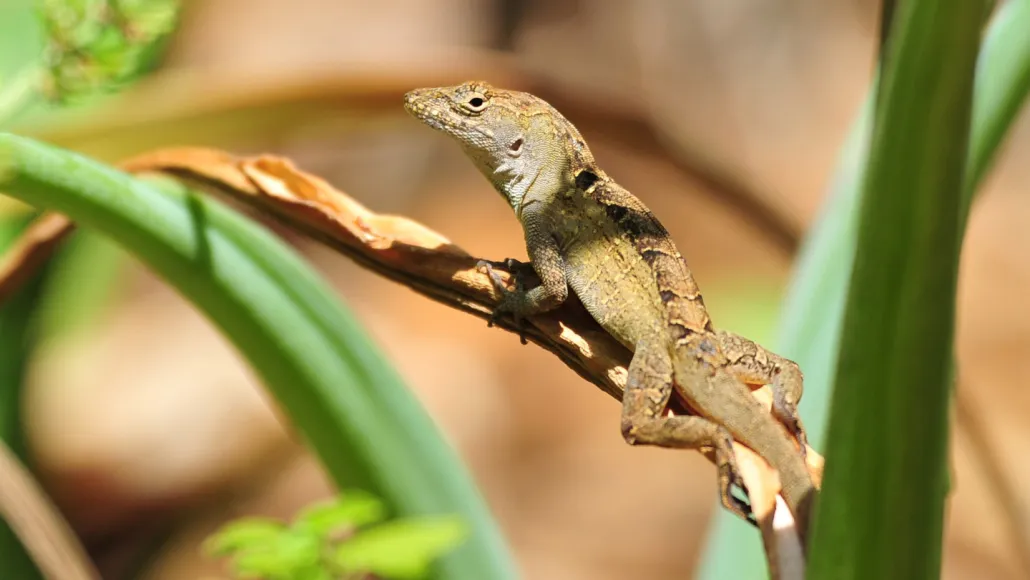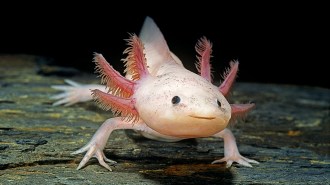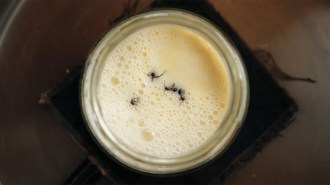
Cuban brown anole lizards, like this one spotted in New Orleans, can tolerate an unprecedented amount of lead in their blood.
Wayne Wang
Some urban lizards have been hiding a heavy secret: They may be among the most lead-tolerant vertebrates on the planet.
Cuban brown anole lizards (Anolis sagrei) can thrive with unprecedented amounts of lead metal circulating in their blood, scientists at Tulane University report August 6 in Environmental Research. After capturing anoles around New Orleans, evolutionary ecologist Alex Gunderson and colleagues discovered that these lizards have the highest blood lead levels reported in any vertebrate.
The average anole’s lead level was 955 micrograms per deciliter of blood, over three times that of Nile crocodiles, the previous record holders. But while the crocs had physical signs linked to high lead exposure, such as blackened teeth, the brown anoles seemed surprisingly healthy.
“They’re doing just fine with levels that, frankly, in other organisms, would be killing them,” Gunderson says. One lizard’s lead level was 3,192 µg/dl. Numbers like that are so extreme that biologist Annelise Blanchette thought her test results were incorrect. “My first thought was that I did something wrong.” But repeated experiments showed the same thing.

In human adults, blood lead levels of 45 µg/dl or higher may require medical treatment. In children, no amount is considered safe. Lead’s toxic effects include brain damage, headaches and stunted growth. In the anoles, though, their levels don’t seem to cause much, or any, harm. In physical tests on a treadmill, track or tiny balance beam, lead exposure didn’t affect the lizards’ endurance, speed or balance, the team found.
When the researchers dosed the animals with even more lead, the anoles tolerated up to about 10,000 µg/dl before showing physical symptoms such as reduced endurance, lethargy and loss of appetite. Genetic analyses revealed some clues as to how anoles might be coping.
They ramp up production of oxygen-carrying molecules, for one. Lead mucks with cells’ ability to ferry oxygen, so pumping out more oxygen carriers could help anoles circumvent that problem, Gunderson says. The work has opened all sorts of new avenues for research, says Blanchette, now at the Environmental Protection Agency in Washington, D.C.
It all started because she was curious about the anoles scampering around New Orleans. Previously, Tulane researchers had discovered lead in the feathers and blood of the area’s mockingbirds. But nobody thought the anoles would be lead-tolerating superstars, Gunderson says. “It required some nerds who are interested in lizards to go out there and start measuring it.”






